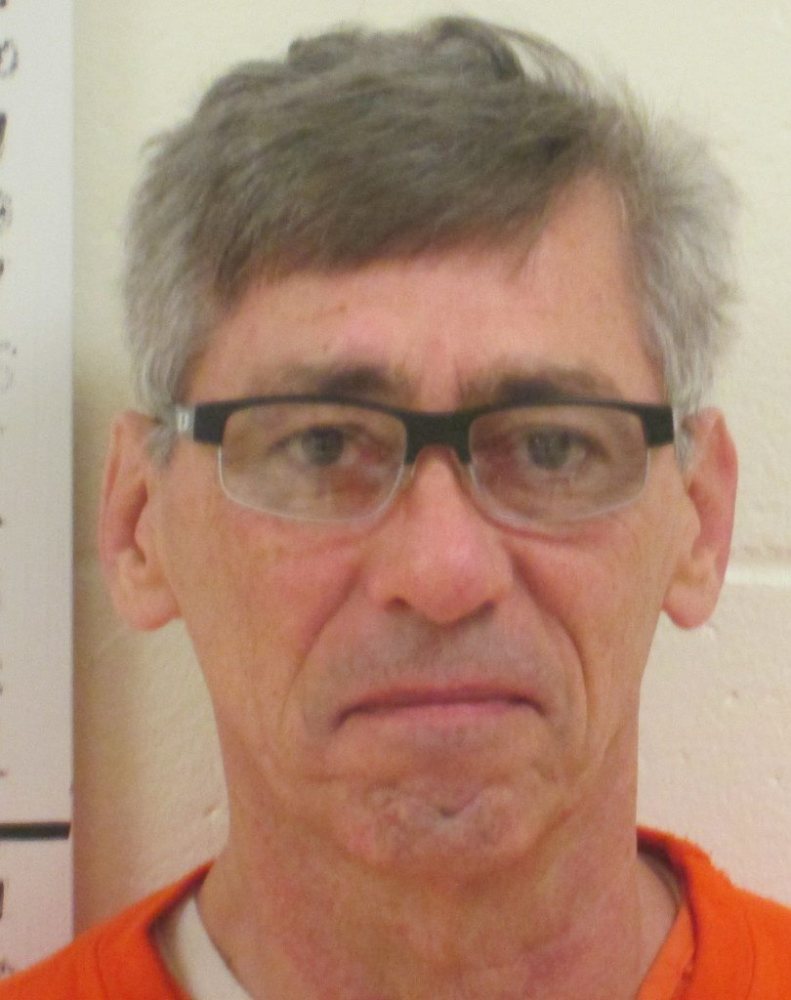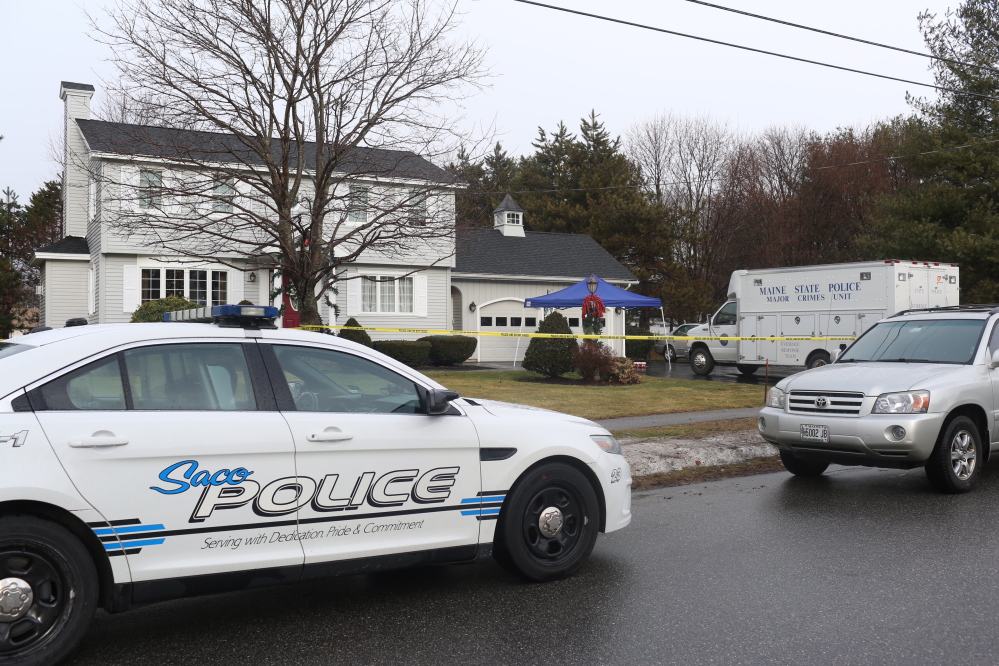A federal jury found Gregory Owens guilty Tuesday of trying to kill his wife by shooting her during a home invasion in Saco in 2014.
Jurors deliberated for about three hours before reaching their verdicts late in the afternoon, convicting Owens of both charges against him: interstate domestic violence and using a firearm during and in relation to a crime of violence. No sentencing date has been set.
Owens, 59, of Londonderry, New Hampshire, had been on trial in U.S. District Court in Portland for the past two weeks. He testified in his own defense Thursday and Friday, denying that he shot Rachel Owens, his wife of 36 years, as his affair with a mistress began to unravel.
“They did their job the way they were supposed to do it. They did a great job,” Rachel Owens said of the jurors after the verdicts. “I nearly died.”
Rachel Owens still has a bullet lodged in the back of her head from the shooting, has a metal rod in one leg, and struggles to use her right arm as a result of the three bullets her husband fired into her while she lay in bed in her friends’ guest bedroom at 25 Hillview Ave. in Saco.
Owens, a retired Army sergeant major and sniper-trained marksman, drove from his house in New Hampshire to the home of Steve and Carol Chabot in Saco on Dec. 18, 2014, while Rachel Owens was visiting there as she grappled with rapidly advancing early dementia.
Owens wore a black mask over his face as he broke into the Chabots’ house by smashing the windows of two doors, then ran upstairs toward the bedrooms with a pistol in his hand. He first came face to face with Steve Chabot, who saw the masked man approaching up the stairs and retreated into the master bedroom. The gunman tried to force his way into a third bedroom, where Carol Chabot had barricaded herself behind a door.
Owens then went to the bedroom where Rachel Owens slept and shot her three times. Next, he returned to the master bedroom and fired six shots through the door, hitting Steve Chabot three times. Steve Chabot called 911 at 2:47 a.m. after being shot.
The Chabots both testified at the trial, but declined to speak with a reporter after the verdicts.
“We’re pleased with the verdict. We believe it was supported by the evidence,” said Assistant U.S. Attorney Darcie McElwee, who prosecuted the case. She said the personal relationships between Owens and the victims made the case more stressful.
Owens, dressed in a charcoal-colored three-piece suit, bowed his head after hearing the jury’s verdict on the first charge, then shook his head slightly from side to side after hearing the second guilty verdict. He said nothing as he was led from the courtroom in custody.
Owens’ attorney, Sarah Churchill, said she was surprised by the verdicts, based on the time line that was given in the case and video evidence that showed Owens at a convenience store in New Hampshire about 12:15 a.m. on the day of the shootings, then at a coffee shop in Londonderry about 4:35 a.m.
“Obviously, he’s upset. He’s distraught,” Churchill said of Owens’ reaction. “He’s maintained from the beginning that he didn’t commit this crime.”
Interstate domestic violence is punishable by up to 20 years in prison. Using a firearm during and in relation to a crime of violence is punishable by 10 years to life in prison. Owens will have to serve whatever sentence Judge Nancy Torresen imposes on the second charge after completing the sentence on the first.
Police pulled over Gregory Owens about three hours after the 911 call as he drove his Hyundai Santa Fe in Hudson, New Hampshire. Investigators later collected DNA evidence from Owens that matched DNA on the outside door of the Chabots’ garage, McElwee told the jury during her closing argument Tuesday morning.
Owens took the stand in his defense after a genetic scientist, the prosecution’s final witness, testified that the defendant’s DNA was found on a broken window of a door to the house that had been smashed by the burglar. The DNA analyst, Jennifer Sabean of the Maine State Police Crime Lab in Augusta, said there was a 1 in 123 quadrillion possibility that the DNA belonged to anyone other than Owens.
“Rachel Owens is a survivor. She sits here today with a 9mm WCC 1987 bullet lodged in her brain because her husband wanted a more exciting life than she could offer him after being stricken with dementia at the early age of 55,” McElwee said in her closing argument.
McElwee said the intruder’s actions at the Chabots’ house during the invasion indicated that he was Owens, since the intruder went to shoot Rachel Owens as she lay in a guest bedroom, even after coming face to face with Steve Chabot at the top of the home’s staircase.
“He was not after Steve or Carol Chabot. The defendant was there for one reason and one reason alone, to kill his wife,” McElwee said. “Why else would he shoot Rachel Owens? She posed no threat to him.”
McElwee said the description that Steve Chabot gave police matched Owens’ height, physique and glasses. She said a footprint found outside the Chabots’ house matched Owens’ boot that police found in his vehicle. She focused at length on the broken glass of a door into the Chabots’ garage, where a human hair and Owens’ DNA were found.
The DNA was collected from the inside of a double-paned window that was exposed only after the outside pane was smashed, meaning that no DNA other than that belonging to the workers who manufactured the window should be there, McElwee argued.
McElwee said that Owens’ motive for shooting his wife was “a snap decision” after his double life of lies began to crumble. His mistress, Betsy Wandtke, testified last week that she had discovered Owens had not left his wife years ago, as he had told her. She also came to doubt his claims about being a military operative who went on frequent covert missions overseas, stories he told her to explain his frequent absences.
Churchill said in her closing argument that the government’s premise of Owens’ motive “doesn’t make any sense.”
Churchill said Wandtke’s problem with Owens was that he lied to her about the status of his marriage and secret missions. Killing Rachel Owens wouldn’t undo that lie, she said.
“It wasn’t the fact that he was still married or that he was still caring for Rachel, it’s that he lied about it,” Churchill said.
Churchill also said McElwee’s argument that the intruder targeted Rachel Owens first is wrong.
She said Carol Chabot testified clearly that the intruder came after her first, trying to get into a bedroom where she was holding the door shut.
“The first thing that happened. The first thing the intruder does is throw all of his weight against the door,” Churchill said.
Churchill argued that it wasn’t surprising that Owens’ DNA was found at the Chabots’ home because he had visited there many times and had been in the garage.
She said state police Detective Christopher Farley’s testimony about where he collected the DNA evidence is unreliable. She said Farley couldn’t remember where he used a gel lift technique on the door to the garage to collect evidence, but testified specifically about using a swab on the door’s window.
Owens faces more criminal charges in state court, including aggravated attempted murder.
Send questions/comments to the editors.




Comments are no longer available on this story